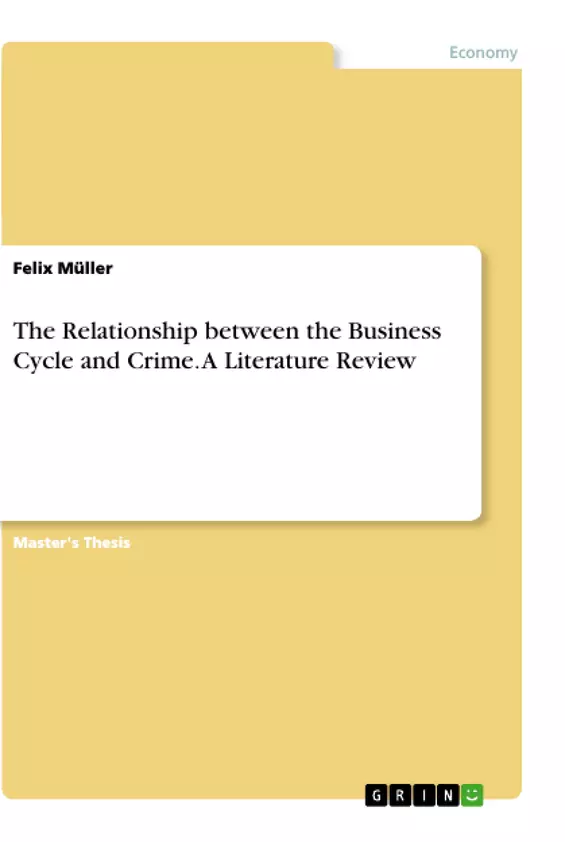From the industrialized countries to newly industrializing and developing countries of the world, violence and crime threaten social stability and are becoming major obstacles in development. It is a global phenomenon that results in the loss of property and/or lives, creates misery and is one of the most harmful social problems throughout the world. Several scholars estimate these costs with $160 billion up to $3,500 billion annually for the United States. Given these tremendous negative effects, it has become of central interest to policy makers and scholars of economics, sociology, and criminology. Understanding the determinant factors of crime is critical and provides a powerful tool to drastically reduce costs to society. Furthermore, there is no doubt that the business cycle has an omnipresent effect on economic activity, employment, individuals, and a variety of other social and economic variables.
Inhaltsverzeichnis (Table of Contents)
- 1. Introduction
- 2. Stylized Facts
- 3. The Business Cycle and Crime
- 3.1 Economics of Crime
- 3.1.1 Theoretical Frameworks
- 3.1.2 The Argument of Cantor and Land (1985)
- 3.1.3 The Problem of Identification
- 3.2 Labor Market Opportunities and Crime
- 3.2.1 Simple Linear Regression Models
- 3.2.2 Instrumental Variable Approaches
- 3.2.3 Alternative Strategies
- 3.3 Economic Growth and Crime
- 3.1 Economics of Crime
- 4. Combining the Results
- 5. Discussion and Conclusion
Zielsetzung und Themenschwerpunkte (Objectives and Key Themes)
This master's thesis explores the relationship between the business cycle and crime, providing a comprehensive literature review. The objective is to analyze existing research on the subject and synthesize key findings, identifying the main theoretical frameworks and empirical methods used to study this connection.
- The relationship between economic fluctuations and crime rates.
- The role of labor market opportunities in influencing criminal behavior.
- The impact of economic growth on crime patterns.
- The effectiveness of various empirical methods used to analyze the relationship between economic variables and crime.
- The complexities of identifying causal relationships between economic factors and criminal activity.
Zusammenfassung der Kapitel (Chapter Summaries)
- Chapter 1: Introduction This chapter introduces the topic of the relationship between the business cycle and crime, outlining the research question and the scope of the literature review. It discusses the importance of understanding this relationship for policymakers and the challenges associated with isolating the causal impact of economic factors on crime.
- Chapter 2: Stylized Facts This chapter presents a comprehensive overview of existing stylized facts regarding the relationship between the business cycle and crime, providing a foundation for the subsequent analysis of theoretical frameworks and empirical research.
- Chapter 3: The Business Cycle and Crime This chapter delves into the theoretical and empirical literature on the relationship between the business cycle and crime. It examines different theoretical frameworks, including the economic model of crime, and explores the empirical evidence from various studies using different methodologies, such as linear regression models and instrumental variable approaches.
- Chapter 4: Combining the Results This chapter summarizes the findings from the literature review, drawing conclusions about the relationship between the business cycle and crime. It highlights the strengths and limitations of existing research and identifies areas for future research.
Schlüsselwörter (Keywords)
This thesis focuses on the relationship between the business cycle and crime, utilizing key concepts such as the economics of crime, labor market opportunities, economic growth, crime rates, and various econometric methods like linear regression and instrumental variables. The research also explores the challenges of identification and causality in this complex relationship.
- Quote paper
- Felix Müller (Author), 2018, The Relationship between the Business Cycle and Crime. A Literature Review, Munich, GRIN Verlag, https://www.grin.com/document/1034826



